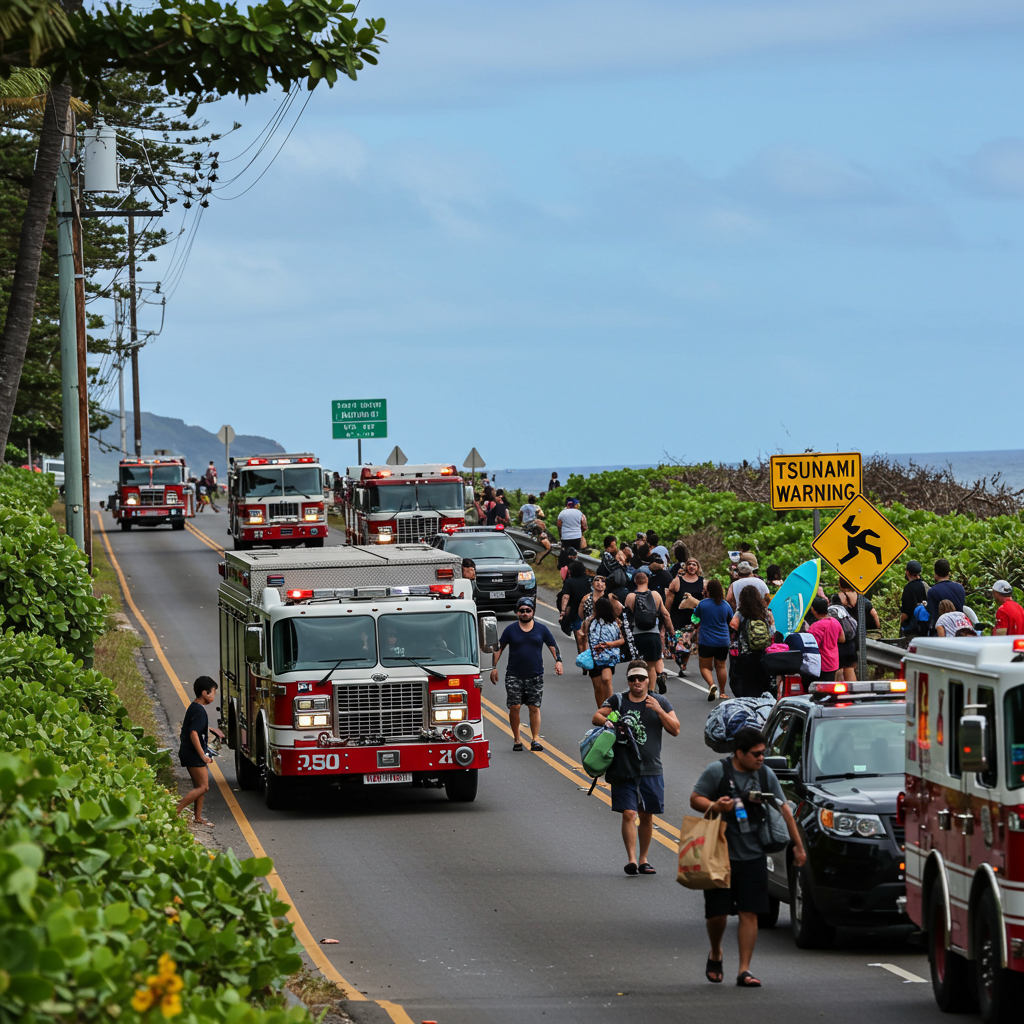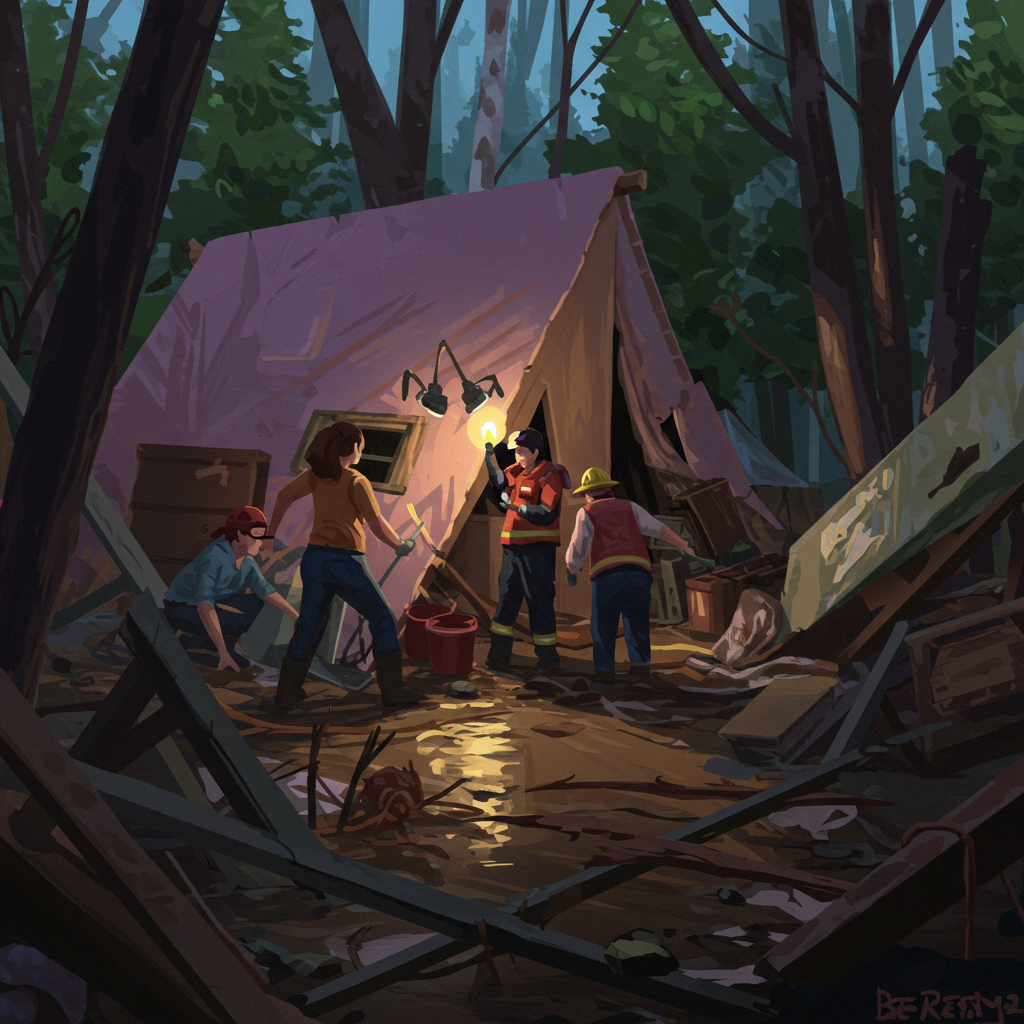Hawaii faced an urgent public safety challenge following a powerful 8.8 magnitude earthquake off Russia’s Kamchatka coast. This seismic event immediately triggered a comprehensive tsunami alert for the entire state, prompting rapid government responses and widespread resident evacuations. Understanding the nuances of these alerts and knowing how to react is crucial for coastal communities. This article provides a detailed account of the event, the official response, and vital information for navigating potential tsunami threats.
The Powerful Quake That Shook the Pacific
On a Tuesday afternoon, a massive 8.8 magnitude earthquake struck off the east coast of Kamchatka, Russia, at approximately 1:25 p.m. Hawaiian time. This formidable tremor, initially reported as 8.0 and later upgraded, possessed the immense power to generate destructive ocean waves across vast distances. The U.S. Geological Survey ultimately confirmed the magnitude at 8.8, underscoring the severity of the deep-sea geological activity. Such an event immediately signals a potential for widespread impact, particularly for regions within the Pacific “Ring of Fire” like Hawaii.
From Initial Tremor to Trans-Pacific Threat
Scientists at the Pacific Tsunami Warning Center swiftly analyzed the seismic data. Within minutes of the earthquake, they began issuing crucial messages. Their preliminary assessment confirmed the potential for a tsunami. This rapid evaluation process is essential for providing early warnings to at-risk coastlines. The data indicated that waves could cause significant damage along the shores of all Hawaiian islands. This critical information set in motion a series of escalating alerts designed to protect lives and property across the archipelago.
Hawaii’s Swift Response: Escalating Alerts and Evacuations
Hawaii’s emergency management agencies responded with urgency. A tsunami watch was first issued at 1:33 p.m. Hawaiian Standard Time. This initial alert signaled that an earthquake capable of generating a tsunami had occurred, advising residents to prepare for potential upgrades. Shortly after, at 2:43 p.m. HST, the watch was upgraded to a full tsunami warning. This highest level of alert indicated that dangerous coastal flooding and currents were imminent or expected.
Siren Activations and Mayoral Directives
To ensure the broadest possible public awareness, City and County of Honolulu Mayor Rick Blangiardi announced a staggered activation of tsunami sirens. These crucial alerts sounded at 4:10 p.m., 5:10 p.m., and 6:10 p.m. on Tuesday. Officials emphasized the urgent need for immediate action to protect lives. Residents in coastal areas were strongly advised to evacuate to higher ground without delay. The speed and clarity of these directives were vital in mobilizing the community.
Understanding the Tsunami Phenomenon and Its Impact
A tsunami is not a single wave but a series of extremely long ocean waves. Each crest can last anywhere from 5 to 15 minutes or more. These powerful waves are capable of extensively flooding coastal areas. Critically, the danger is prolonged; subsequent waves can arrive for many hours after the first. It is also important to remember that the initial wave may not necessarily be the largest or most destructive. Tsunamis efficiently wrap around islands, putting all shores at risk regardless of their facing direction.
Observing the Waves: First Arrival and Lingering Dangers
The first tsunami wave reached Hawaii around 7:17 p.m. Observations from locations like Hanalei Bay and Haleiwa on Oahu’s North Shore noted unusual water receding below normal sea levels. This phenomenon, where the seafloor is temporarily exposed, is a telltale sign of an approaching tsunami. However, it quickly refloods with immense force. Even after the initial waves, extremely strong and unusual nearshore currents can persist for hours. Debris carried by the waves can also amplify their destructive power, making coastal areas exceptionally hazardous. Concurrent high tides or high surf conditions can further worsen the tsunami hazard.
Comprehensive Actions for Public Safety and Infrastructure
In anticipation of the tsunami’s arrival, various entities across Hawaii took decisive action. Emergency shelters were rapidly opened statewide, providing safe havens for evacuating residents. To facilitate smoother evacuations, Kolekole Pass in West Oahu was opened, easing traffic congestion. Electric utility companies provided essential safety tips, advising residents on power outages and electrical hazards. Major airlines like Hawaiian and Alaska Airlines put flights to Hawaii on hold, prioritizing passenger safety.
Securing Ports and Aiding Evacuation Flow
Traffic across the state became heavy as residents responded to the warning, heading towards higher ground. The U.S. Coast Guard played a critical role by ordering the evacuation of Hawaii harbors and closing ports to inbound vessel traffic. This measure prevented vessels from being caught in dangerous currents or damaging port infrastructure. City leaders and the Hawaii Island mayor publicly urged caution and decisive action, reinforcing the official messaging and the importance of adhering to safety protocols.
Navigating Hawaii’s Tsunami Alert System
The sophisticated alert system relies on warning center scientists to assess tsunami generation potential rapidly. Within minutes of an earthquake, these experts can issue messages detailing specific alert levels. Understanding these distinctions is paramount for public safety:
Tsunami Watch: This alert is issued when an earthquake could generate a tsunami. It serves as a preparatory notice, prompting individuals to stay informed and prepare for potential upgrades to higher alert levels.
Tsunami Advisory: This is an upgrade from a watch. It indicates the potential for strong currents or dangerous waves, though widespread coastal inundation is generally not expected. An advisory advises staying away from beaches and waterways, as hazardous conditions still exist.
- Tsunami Warning: This is the highest and most critical alert level. It is issued when significant, widespread inundation is imminent or expected. A warning signifies dangerous coastal flooding and currents, necessitating urgent action and immediate evacuations to protect life and property.
- keyt.com
- www.newspressnow.com
- www.azfamily.com
The Downgrade and Persistent Caution
By 10:40 p.m. Tuesday, the Pacific Tsunami Warning Center downgraded the tsunami warning to an advisory. This decision came after comprehensive observations revealed that tsunami wave heights had dropped below the three-foot threshold and had stabilized. Consequently, state and county officials were able to lift evacuation orders, allowing many residents to return home.
Despite the downgrade, officials maintained a cautious stance. They warned that sea-level changes and strong currents could persist along all coasts for several hours. These lingering conditions were highlighted as continued hazards for swimmers, boaters, and anyone near the shore, including those at beaches, harbors, and marinas. The public was strongly advised to remain aware of their location relative to tsunami evacuation zones and to exercise continued vigilance. The shift from warning to advisory does not mean the danger is completely over, but rather that the most immediate, widespread threat has diminished.
Frequently Asked Questions
What is the difference between a tsunami warning and a tsunami advisory in Hawaii?
A Tsunami Warning is the most severe alert, issued when significant, dangerous coastal flooding and currents are imminent or expected. It necessitates urgent action, including immediate evacuation to higher ground. In contrast, a Tsunami Advisory indicates the potential for strong currents or dangerous waves, but widespread inundation is not expected. It advises people to stay away from beaches, harbors, and waterways due to hazardous conditions. The recent event saw Hawaii move from a Watch, to a Warning, and then downgraded to an Advisory.
What immediate steps should residents take during a tsunami warning in Hawaii?
During a Tsunami Warning in Hawaii, residents in designated evacuation zones must immediately move to higher ground, away from coastal areas. Officials activated sirens in phases, and emergency shelters were opened across the islands. The U.S. Coast Guard also ordered the evacuation of harbors and closed ports. If you are in an affected area, follow all official instructions, secure your property if time permits, and prioritize your safety by reaching elevated locations.
Why was the tsunami warning for Hawaii downgraded, and what does it mean for ongoing safety?
The tsunami warning for Hawaii was downgraded to an advisory after the Pacific Tsunami Warning Center observed that wave heights had dropped below the three-foot threshold and stabilized. This indicated that the most severe, widespread inundation threat had passed. However, the downgrade does not mean the danger is entirely over. Officials still cautioned that sea-level changes and strong currents could persist for several hours, posing hazards to swimmers, boaters, and anyone near shore. Continued vigilance and awareness of coastal conditions are crucial even after a warning is lifted.
Staying Prepared: A Continuous Commitment
The 8.8 magnitude earthquake and subsequent tsunami alert served as a powerful reminder of Hawaii’s vulnerability to natural disasters. The swift, coordinated response from state and county officials, combined with an informed public, helped manage the immediate threat. However, preparedness is an ongoing commitment. Understanding the alert system, knowing evacuation routes, and having an emergency plan are indispensable for every resident and visitor. By remaining informed and vigilant, Hawaii continues to strengthen its resilience against the forces of nature, ensuring the safety of its vibrant communities.


